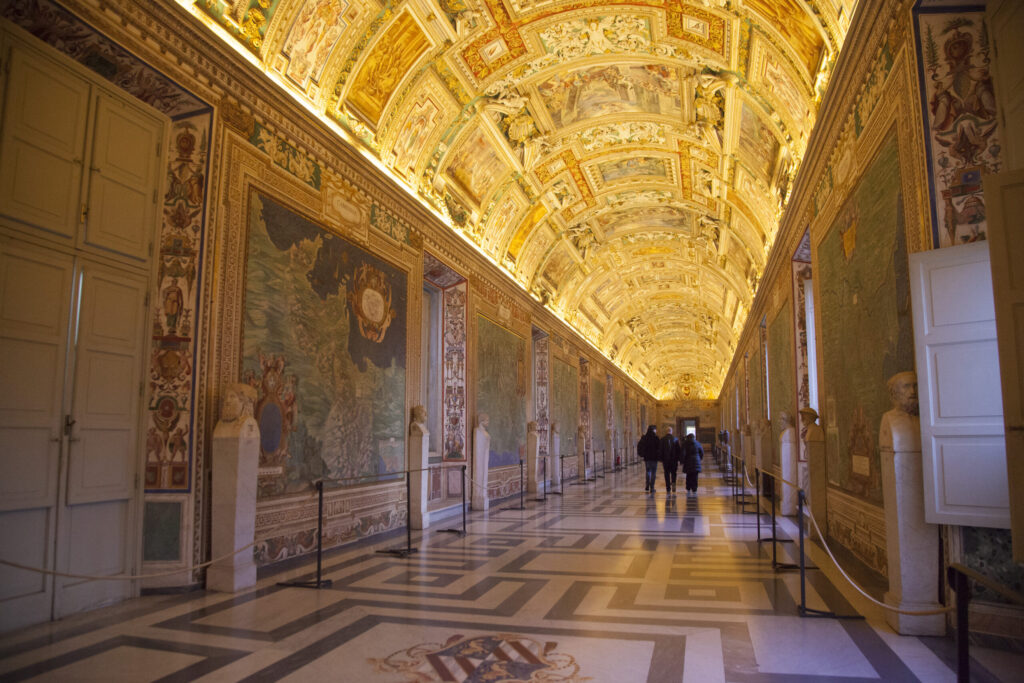History of Vatican Tours
The Vatican, an independent city-state enclaved within Rome, has been a spiritual and cultural hub for centuries. Tours of the Vatican have evolved significantly over time, transforming from simple pilgrimages to comprehensive experiences that include art, history, and spirituality. Modern Vatican tours in Rome offer insights into the rich tapestry of the Vatican’s heritage, providing an in-depth look at its significance across various facets of history.
Rome’s Vatican tours provide a comprehensive experience of one of the most important religious and cultural places on earth, including the Vatican Museums, St. Peter’s Basilica, and the Sistine Chapel. These tours provide a deep dive into the Vatican’s rich history and art collections, often guided by experts who enhance the experience with detailed historical context and fascinating anecdotes. Booking in advance and choosing guided options can greatly enrich the visit, ensuring a more personalized and insightful exploration of this extraordinary destination.
Throughout its history, the Vatican has played a pivotal role in not only religious matters but also the arts and sciences. The Vatican Museums themselves are a testament to the extensive art collection amassed by the Roman Catholic Church over centuries. From ancient sculptures to Renaissance paintings, the collections offer a unique opportunity to explore human creativity and its connection to faith.
Key Sights to Visit
When touring the Vatican, certain landmarks are must-sees. St. Peter’s Basilica, the Sistine Chapel, and the Vatican Museums are among the most popular attractions. Each offers unique insights into the religious and artistic heritage of the Vatican, making them essential stops on any Vatican tour.
Peter’s Basilica
As one of the largest churches in the world, St. Peter’s Basilica is an architectural marvel. It symbolizes the Catholic Church and features significant works of art, including Michelangelo’s Pietà. Its enormous Michelangelo-designed dome is visible from all around Rome and dominates the cityscape. To get a stunning perspective of St. Peter’s Square and the surrounding city, visitors can ascend to the top of the dome.
The Sistine Chapel
Michelangelo painted the exquisite ceiling of the Sistine Chapel, which is well known. It is a highlight of Vatican tours and an essential visit for art enthusiasts. In addition, the papal conclave, which elects new popes, is held in the chapel. The ceiling’s intricate details and vibrant colors leave a lasting impression on all who visit, making it a highlight of the Vatican experience.
Vatican Museums
The Vatican Museums house an extensive collection of art and historical artifacts. From Renaissance masterpieces to Egyptian mummies, the museums offer a comprehensive look into various epochs of human history. The museum’s vast galleries are a treasure trove of art and history, reflecting the Church’s long-standing commitment to preserving culture and knowledge.
Insider Tips for a Memorable Tour
- Book tickets in advance: Avoid long queues and secure your spot by booking tickets online well before your visit.
- Visit early or late: Arriving early in the morning or late in the afternoon can help you avoid the busiest times and enjoy a more relaxed experience.
- Hire a guide: Consider hiring a knowledgeable guide who can efficiently provide in-depth information and navigate you through the highlights.
Benefits of Guided Tours
Guided tours can significantly enhance your experience. Experts can provide historical context, share lesser-known facts, and help navigate through crowded areas efficiently. According to Travel and Leisure, having a guide can enrich your travel experience by providing deep dives into local culture and history. Guides often share personal anecdotes and historical facts that you might not find in guidebooks, adding depth and richness to your visit.
Cultural and Educational Aspects
The Vatican is not just a religious site; it’s a treasure trove of cultural and educational value. The artwork by masters like Michelangelo and Raphael offers visitors a profound understanding of Renaissance art and architecture. Educational programs tailored for visitors, as highlighted by Fodor’s Travel, ensure that tourists leave with more than just memories but also knowledge. These programs often include lectures, guided tours, and interactive experiences that make learning engaging and accessible.
Booking Your Tour
Booking a tour can be straightforward if you know what to look for. Ensure you check credentials, compare pricing, and read reviews to make an informed choice. Online platforms offer various packages that cater to different interests and budgets. Look for companies that provide customizable itineraries and small group sizes for a more personalized experience. Don’t forget to review cancellation policies and other terms to make sure your booking is as smooth as possible.
Visitor Feedback and Reviews
Reading reviews and testimonials can give you a better idea of what to expect. Visitors often share valuable insights about the tours’ quality, the guides’ expertise, and overall impressions. This feedback can help you plan a more enjoyable visit. Look for reviews on reputable travel websites and forums, where users share candid experiences and rate their satisfaction levels. A close watch on recent reviews will also notify you of any adjustments or modifications to the trips.
Conclusion
In conclusion, Vatican tours offer a profound and enriching travel experience, blending history, art, and spirituality into a single journey. The evolution of these tours reflects a deepening appreciation for the Vatican’s multifaceted significance, from its architectural marvels like St. Peter’s Basilica to the unparalleled artistry of the Sistine Chapel. In particular, guided tours improve this experience by giving knowledgeable commentary, making it easier to navigate through the Vatican’s treasures, and giving a deeper comprehension of the cultural and historical backgrounds that have shaped this renowned location.
Furthermore, the Vatican’s extensive collection of art and historical artifacts serves as a testament to the Church’s commitment to preserving human creativity and knowledge. Whether through personal anecdotes from guides or interactive educational programs, visitors leave with lasting memories and a deeper appreciation for Renaissance art and religious history. By planning ahead, booking wisely, and leveraging visitor feedback, travelers can ensure a memorable and insightful exploration of one of the world’s most revered cultural and spiritual destinations.







